 With the federal government lagging behind on its plans to implement the use of electronic passports, identification cards and driver's licenses, biometric vendors are targeting a new market: schools.But the use of biometric technology in schools, such as a system being used by Stayton Middle School's cafeteria, has some parents and privacy advocates condemning the move as outright Orwellian.[[[[["This is biometric data collecting,"]]]](yes it is....) said Jann Carson, the associate director of the American Civil Liberties Union in Portland. "It's the 'Big Brother' theory. The last thing we should do is teach parents and their young children to be casual about turning over personal data, like a fingerprint, just for the sake of speeding up a lunch line."Feeling the lunchtime crunch, Stayton Middle School administrators last month installed a finger-scanning system {{{{to help expedite}}}} the cafeteria meal line.To implement the new lunch account system, students' prints were scanned into a scanner to help identify them.Jack Adams, the superintendent of the North Santiam School District, said the system does not take a student's actual fingerprint."It's a string, not a fingerprint,"(yeah....right....) Adams said. "It's three mathematical pieces of information taken from a student's finger. It's stored on the school computer and [[[[can't be used in any other way."]]]](yes it can...and it will)But some parents are opposed to the finger-scanning of minors in schools. They say they're concerned that the prints their children register with the school could be stolen, misplaced or used for a form of fraud that hasn't even been invented. Britta Hamshar of Stayton is one of those parents.When Hamshar's 10-year-old daughter came home from school Sept. 24 and said she had been fingerprinted for the cafeteria's new account system, the mother was angry."They say it's not a fingerprint, but it is," Hamshar said. "I don't know that hackers won't be able to steal my daughter's fingerprints in the future."Keith Butler, the district's director of technology, has heard the complaints."Some of the parents are worried the government will be able to access their kids' prints," Butler said. "But what they don't realize is that the actual image of the fingerprint[[[[ is discarded and all that's used is a number.]]]]"The middle school's new scanner plots points on a fingerprint and then converts those points to an encrypted number, he explained.That number is used to verify a student's account, he added.Rather than using an ID card, entering a pin number or paying cash, students simply press their finger or thumb on an infrared scanner to be matched to their lunch account. School {{{{officials say the new system""" saves time""" for the cashiers because they don't have to write everything down and can just push a button if a child forgets his or her lunch money for the day.They also say the system allows parents to pre-pay for student lunches and gives privacy to students who receive free or reduced meals.}}}}But critics say that while the scanners may help improve the efficiency of a school cafeteria, it still is an ink-less way of collecting fingerprints.Steve Moon, the marketing director of MealTime, a Portland firm that sold the finger-scanning system to the school, rejects that argument."All those fears and concerns are based on misinformation," Moon said. "The data can't be used to re-create a fingerprint or by police to identify a student."It's not known how many schools in Oregon use the finger-scanning system because the federal government does not require school districts to report their use, an official with the Oregon School Board Association said.But Moon estimates that MealTime has sold the system to at least 60 to 70 schools in Oregon.Lillie Coney, meanwhile, says she's concerned that biometric vendors are using semantics to convince schools that a person's fingerprint image is stored as mathematical points only."All biometrics are mathematical points," said Coney, an associate director with the Electronic Privacy Information Center, a research group in Washington, D.C., that focuses public attention on emerging civil liberties and privacy issues."Now we're seeing schools use the language of marketers who sell this type of technology to convince parents there's nothing to worry about," she said. "Schools should be skeptical of an industry that creates this technology and which then says the data can't be used in other ways."Stayton Middle School's data is kept on a self-contained database at the district office, Butler said.However, Coney worries that with technological advances, someone could use the information in five or 10 years to recreate a child's fingerprints."In the final analysis, the print information collected from these students is only as secure as the database in which that information is stored," Coney said. "And no database is immune from attackers."
With the federal government lagging behind on its plans to implement the use of electronic passports, identification cards and driver's licenses, biometric vendors are targeting a new market: schools.But the use of biometric technology in schools, such as a system being used by Stayton Middle School's cafeteria, has some parents and privacy advocates condemning the move as outright Orwellian.[[[[["This is biometric data collecting,"]]]](yes it is....) said Jann Carson, the associate director of the American Civil Liberties Union in Portland. "It's the 'Big Brother' theory. The last thing we should do is teach parents and their young children to be casual about turning over personal data, like a fingerprint, just for the sake of speeding up a lunch line."Feeling the lunchtime crunch, Stayton Middle School administrators last month installed a finger-scanning system {{{{to help expedite}}}} the cafeteria meal line.To implement the new lunch account system, students' prints were scanned into a scanner to help identify them.Jack Adams, the superintendent of the North Santiam School District, said the system does not take a student's actual fingerprint."It's a string, not a fingerprint,"(yeah....right....) Adams said. "It's three mathematical pieces of information taken from a student's finger. It's stored on the school computer and [[[[can't be used in any other way."]]]](yes it can...and it will)But some parents are opposed to the finger-scanning of minors in schools. They say they're concerned that the prints their children register with the school could be stolen, misplaced or used for a form of fraud that hasn't even been invented. Britta Hamshar of Stayton is one of those parents.When Hamshar's 10-year-old daughter came home from school Sept. 24 and said she had been fingerprinted for the cafeteria's new account system, the mother was angry."They say it's not a fingerprint, but it is," Hamshar said. "I don't know that hackers won't be able to steal my daughter's fingerprints in the future."Keith Butler, the district's director of technology, has heard the complaints."Some of the parents are worried the government will be able to access their kids' prints," Butler said. "But what they don't realize is that the actual image of the fingerprint[[[[ is discarded and all that's used is a number.]]]]"The middle school's new scanner plots points on a fingerprint and then converts those points to an encrypted number, he explained.That number is used to verify a student's account, he added.Rather than using an ID card, entering a pin number or paying cash, students simply press their finger or thumb on an infrared scanner to be matched to their lunch account. School {{{{officials say the new system""" saves time""" for the cashiers because they don't have to write everything down and can just push a button if a child forgets his or her lunch money for the day.They also say the system allows parents to pre-pay for student lunches and gives privacy to students who receive free or reduced meals.}}}}But critics say that while the scanners may help improve the efficiency of a school cafeteria, it still is an ink-less way of collecting fingerprints.Steve Moon, the marketing director of MealTime, a Portland firm that sold the finger-scanning system to the school, rejects that argument."All those fears and concerns are based on misinformation," Moon said. "The data can't be used to re-create a fingerprint or by police to identify a student."It's not known how many schools in Oregon use the finger-scanning system because the federal government does not require school districts to report their use, an official with the Oregon School Board Association said.But Moon estimates that MealTime has sold the system to at least 60 to 70 schools in Oregon.Lillie Coney, meanwhile, says she's concerned that biometric vendors are using semantics to convince schools that a person's fingerprint image is stored as mathematical points only."All biometrics are mathematical points," said Coney, an associate director with the Electronic Privacy Information Center, a research group in Washington, D.C., that focuses public attention on emerging civil liberties and privacy issues."Now we're seeing schools use the language of marketers who sell this type of technology to convince parents there's nothing to worry about," she said. "Schools should be skeptical of an industry that creates this technology and which then says the data can't be used in other ways."Stayton Middle School's data is kept on a self-contained database at the district office, Butler said.However, Coney worries that with technological advances, someone could use the information in five or 10 years to recreate a child's fingerprints."In the final analysis, the print information collected from these students is only as secure as the database in which that information is stored," Coney said. "And no database is immune from attackers."PS:The PLAN of DESENSITATION keeps moving FULL FORCE FORWARD as planned....As it is written:
"And he causeth ALL,both small and great,rich and poor,free and bond,to receive a mark in their right hand,or in their foreheads:
And that NO MAN MINGHT BUY or SELL,SAVE HE THAT HAD THE MARK,OR THE NAME OF THE BEAST,OR THE NUMBER OF HIS NAME.
Here is wisdom.Let him that hath understanding count the number of the beast:for it is the number of a MAN;and his number is Six hundred threescore and six."
Revelation 13:16-18
FOLKS...it's gonna happen as IT IS WRITTEN and what we are witnessing now is a well layed out plan of mass DESENSITATION as to PREPARE the MASSES to WELCOME THE ANTICHRIST and ALL that he will introduce as a "GREAT IDEA"during the TRIBULATION PERIOD...
RUN TO JESUS WHILE THERE IS STILL TIME.....!!!!!REPENT and TURN TO JESUS....!!!!!!
As in the days of Noah....









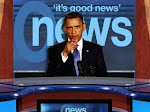

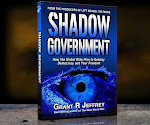
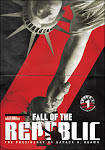




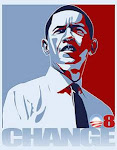
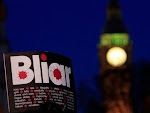
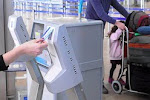




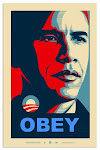





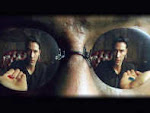





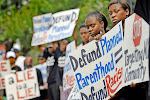

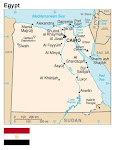


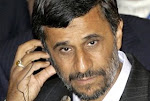

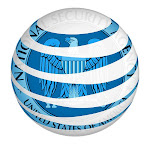



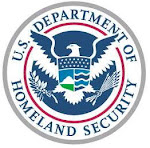




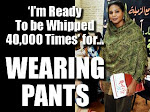

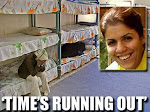







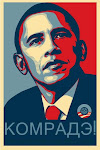
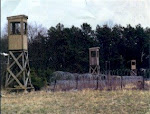









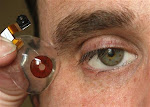


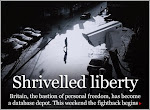




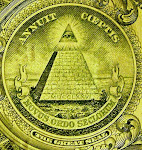


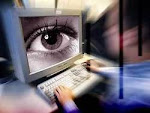

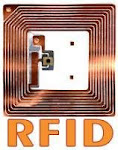.bmp)



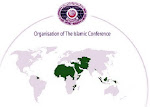






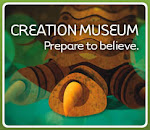
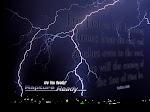







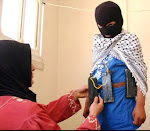

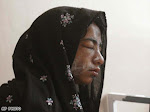



.bmp)